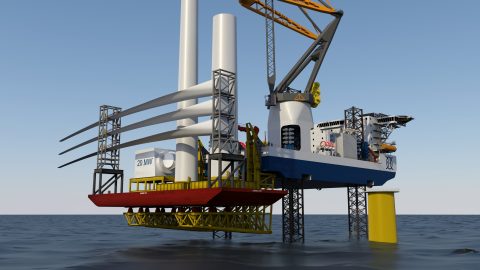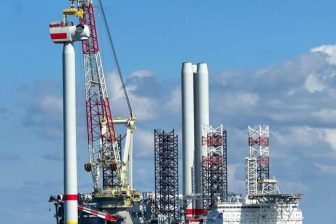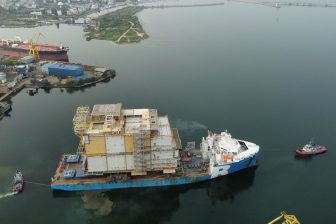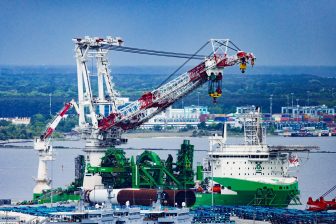
Friede & Goldman aims to increase uptime of installation vessels with barge rack
Friede & Goldman has developed a new feeder concept for the offshore wind industry called BargeRack. The system eliminates motions between the jack-up installation vessel and the feeder barge thus removing the need for complicated and expensive motion-compensating equipment.
This system utilizes a trussed rack fitted to the transom of a relatively small self-elevating vessel. The feeder barge with its turbine component cargo is floated over the submerged rack and then lifted out of the water completely using the jacking system of the installation vessel.
From this position, the main crane can install the wind turbine components directly from the stationary feeder barge onto the turbine foundation. After turbine installation, the self-elevating unit jacks down into the water, submerging the rack, and re-floating the now empty feeder barge.
According to Friede & Goldman, the system will be able to handle turbines of up to 20 MW and will significantly increase uptime due to much larger allowable weather windows. “Furthermore, due to the simplicity, existing United States infrastructure can be used which eliminates the need for purpose-built feeder vessels or expensive and complicated feeder barges”, the company states.
You just read one of our premium articles free of charge
Register now to keep reading premium articles.




